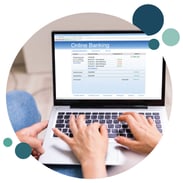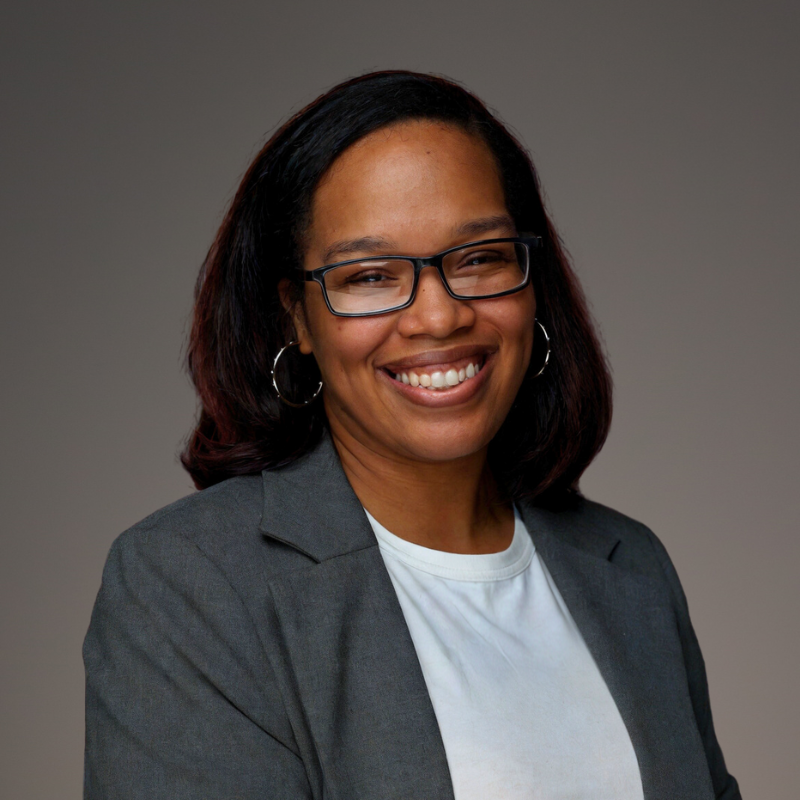How Much Money Should I Keep In My Checking Account?

When you have more than enough funds in your checking account, you stay ahead of any maintenance or overdraft fees.

On the flip side, having more than enough in the account could also open pandora's box to spending more money and losing control of your budget, just because the money is there. Plus, it could cause you to miss out on growing those extra funds in a high-yield savings account or a Certificate of Deposit (CD).
So…what's the magic dollar amount needed in a checking account?
That's the million-dollar question! Unfortunately, that amount isn’t the same for every account holder. Everyone’s living expenses are different, and each financial institution's fees aren’t the same.
If you're looking for the magic amount to have - this is an individual determination. Typically, your household income influences the amount in your account. According to a 2019 NerdWallet survey conducted online by Harris Poll the average American's checking account balance was about $2,900.
QUICK TIP: If possible keep at least one or two months worth of living expenses in your checking account. On top of that keep an extra 30% to cover fees just to be safe. |
But no worries - you're on a path to mastering your spending, so we’ll uncover how much you should keep and where you should move the rest of your money so you’re benefiting at the end of the day.
quick links
|
 how to determine what to have in my checking account?
how to determine what to have in my checking account?
step 1 - track your spending
In a recent article, How to Get Back on Track With My Finances?, I share the tips & tricks of re-tracking your spending, even when you have a budget in place. If you've tracked your expenses before and need to know where you went wrong or you're just ready to reset your finances and know where your expenses go each month - the steps in the article will help you get there. But if you are doing this all for the first time and need to track your expenses, it’s time to understand what you currently spend so you have an idea of how much you'll eventually need in your checking account.
There are a few tools to help you keep track of your spending:
- Good Old-Fashioned Pen and Paper: The numbers may feel more real to you when writing it down.
- Online Banking: A lot of financial institutions have budgeting tools wrapped into their online banking platform. If they do, then you won’t have to go through the hassle of categorizing your spending by hand.
- Mobile Apps: Check out apps like Goodbudget or the Mint App to help you track
QUICK TIP: To help keep your tracking top of mind, consider setting up account and transactional alerts. Then, every time you get a notification or email about your spending, you can track it! |
Step 2 - know your recurring payments
Now that you've recorded your spending and know all that comes out of your account daily, it’s time to think about the important recurring expenses - your bills and debt. This includes rent, mortgage, utilities, insurance, car payments, and credit card payments. Psst… don’t forget about allllll of those streaming services, too.
Have those funds available in your account first because they ‘re the important expenses. Plus counting those expenses will ensure you don’t miss a payment (which will affect your credit score.) A good rule of thumb is to try to keep 1 - 2 month’s worth of bills in your checking account.
QUICK TIP: When keeping enough for bills like credit card bills, it'll help to know how much you spend on your credit card each month and track those expenses. If you need help - I got you. Here are steps that'll help. |
Step 3 - figure out your “other” day-to-day expenses

When determining how much to have in your checking account you want to include your other day-to-day expenses, too. This includes groceries, dining out, clothing and other discretionary costs (like travel), entertainment, hobby’s, and more. Reserve at least a one to two month’s worth of those expenses in your checking account, too.
step 4 - understand your checking account fees
Some financial institutions charge fees for simply having a checking account (I talk about that long list of potential fees in Understanding Checking Accounts. ) Monthly service fees and overdraft fees are the popular charges account holders want to be prepared for:
- Monthly Service Fee: Many financial institutions may charge anywhere to $15 and up to help maintain the account. There may be an opportunity to get this fee waived (especially if you Have a Good Relationship with Your Financial Institution. Make sure to ask about this fee at account opening.
QUICK TIP: Financial institutions may waive the monthly service fee if you meet the financial institutions minimum balance amount. For example, if you have $1,500 in your checking account and $1,500 is the minimum balance to waive the fee, then you won't incur a monthly service fee. |
- Overdraft Fee: This fee occurs when you've gone negative in your checking account. When you spend more than your account balance, many financial institutions may charge a fee ranging from $25 and up.
It's great to do what you can to avoid checking account fees but in case you can't escape the charge, try to keep an extra $100 or more to be in the clear. This extra will serve as your buffer to be safe from going negative in your checking account. If you want to learn the exact costs that are associated with your checking account, reach your financial institution.
Step 5 - keep monitoring your checking account

It’s important to remember your expenses month to month will more than likely change, so continue monitoring your checking account often to ensure you have enough for your spending needs.
Psst… You can control your spending when tracking your expenses by having a budgeting plan in place. Here are some helpful tips to building a budget.
where should i put the rest of my money?
If you find yourself having more money in your checking account outside of what you truly need, it's possible you'll be tempted to spend it and could blow your budget. A great way to avoid that temptation is by moving the extra cash elsewhere. It could be in a savings account, retirement account, or another checking account... you have options!
My first suggestion is to place the extra cash in a regular savings account. It’s an account that's meant to save your money, not spend it (which is why you should never use your Savings Account for daily spending). Here are a few more options available:
- A high-yield savings account. This is a perfect place if you're saving for emergencies, long-term or short-term goals. With a high-yield savings account, you could earn about 10 or 20 times more money back in interest than you would with a regular savings account.
- Certificate of Deposit (CD): Having a CD is a guaranteed way you can get more money back in savings. Although many financial institutions require the account holder to start the CD account with a minimum deposit of $500 or more.
- Individual retirement account (IRA): Placing your money in an IRA is a great way to prepare for a peaceful and stress-free life. Not everyone thinks about nor plan for retirement, which is why it’s a great location to move your extra funds. Here’s a look at how you can save and better prepare for retirement.
- Have more than one account: Yes, it’s possible to have more than one checking account, especially if you’re looking to budget better. You may want to use multiple checking accounts for different priorities (one for paying bills, one for daily spending, etc.)
|
yay! your a step closer to mastering your checking account
here's what's next
Even though the exact dollar amount in your checking account will not be the same for everyone, the steps to determine that amount are. To help you keep track, use mobile apps like Goodbudget or the Mint App to help. And, don't forget to set up alerts so you're in the know with all that's happening in your checking account in case you spend more than you originally planned for!
If you're still struggling with your checking account and feel like you're spending more than you want, its time rework your budget and get back on track with your finances. Follow the steps and you'll feel good about the direction you're headed and see an improvement with your overall spending. Let's whip those finances into shape!
WANT MORE WAYS TO MASTER YOUR SPENDING?
Balancing your checking account is another way to stay in control of your finances. You can also do this by learning how to budget. Check out The Basics of Building Your Budget to get started. We also have a free and handy Smart Budgeting Guide.
As Content Strategist behind the Learning & Guidance Center, Yanna loves showing just how doable finance can be. Whether it’s simple tips, step-by-step guides, or comparison charts, she’s passionate about helping readers take charge and reach financial freedom with confidence
more resources for your financial journey
How to Get Back on Track With My Finances?
Getting back on track with finances can seem impossible, especially if spending money is easier than saving. Whip your finances back in shape with these can-do money-saving tips.
12 min. read
The Basics of Building Your Budget
Looking for budgeting tips to accomplish your financial goals? Access our savings tools to help you become one step closer to achieving financial success.
8 min. read
 balance your checking account
balance your checking account
Learn how to track your transaction and balance in real-time when you know how to balance your checking account.
 determine how much you should keep in your checking account
determine how much you should keep in your checking account
Here's the amount you need to keep your checking account in great shape.
 protect your checking account
protect your checking account
here's what you need to know to determine if overdraft protection is right for you.





